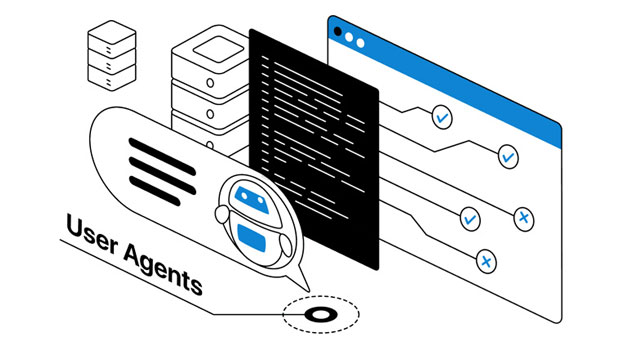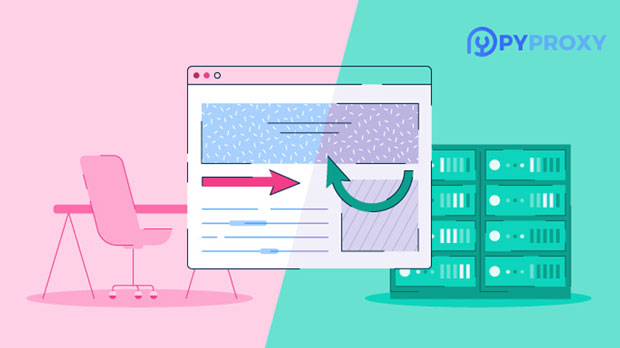In a school network, where access to resources, security, and content control are critical, choosing the right type of proxy server can make a big difference. HTTP proxies and sock s5 proxies serve similar functions but differ significantly in terms of performance, compatibility, and use cases. Understanding these differences can help students and administrators make informed decisions about which proxy is best suited for their needs. This article explores the distinctions between HTTP and SOCKS5 proxies, particularly in the context of a school network, providing a detailed analysis of their features and how they impact the network's functionality. 1. What is an HTTP Proxy?An HTTP proxy is a server that acts as an intermediary between a user's device and the web. It only handles HTTP (Hypertext Transfer Protocol) traffic, which is used for browsing websites and downloading web content. In a school network, HTTP proxies are commonly deployed for filtering web traffic, enforcing access policies, and improving internet speed by caching frequently visited websites.1.1 Functionality of HTTP ProxiesHTTP proxies primarily focus on requests that are made using the HTTP or HTTPS protocol. When a student or staff member requests a web page, the HTTP proxy server forwards the request to the destination website and then returns the response to the user. Since HTTP proxies only handle web traffic, they are limited to browsing-related activities and cannot handle other types of internet traffic, such as FTP or email protocols.1.2 Benefits of HTTP Proxies in School NetworksIn schools, HTTP proxies are commonly used for content filtering, where access to certain websites is blocked based on categories like gaming, social media, or inappropriate content. They also provide caching features that help speed up internet access for frequently visited websites, enhancing the user experience. Additionally, they can be used to hide the user's IP address and protect their anonymity, although to a limited extent.2. What is a socks5 proxy?SOCKS5 proxies are a more versatile type of proxy that handles a broader range of internet traffic. Unlike HTTP proxies, SOCKS5 proxies work with all types of traffic, including HTTP, FTP, POP3 (email), and others. This makes them more flexible in their usage, as they can handle a variety of applications beyond just web browsing. For example, SOCKS5 proxies are often used for streaming media, peer-to-peer file sharing, and other activities that require handling multiple protocols.2.1 Functionality of SOCKS5 ProxiesSOCKS5 proxies operate at a lower level of the OSI (Open Systems Interconnection) model than HTTP proxies, allowing them to support all types of internet traffic. They forward data between the user and the internet without modifying the content. Since they can handle a variety of protocols, they are more suitable for use in applications such as video streaming, gaming, and other data-heavy tasks that require high performance.2.2 Benefits of SOCKS5 Proxies in School NetworksIn a school environment, SOCKS5 proxies are beneficial for tasks that go beyond simple web browsing. They are often used for anonymous browsing, accessing restricted content, and handling peer-to-peer file transfers. Because SOCKS5 proxies support a wider range of applications, they are more flexible than HTTP proxies and can accommodate different needs in a school network, especially when students or staff need to access a variety of online resources.3. Key Differences Between HTTP and SOCKS5 Proxies3.1 Protocol SupportThe primary difference between HTTP and SOCKS5 proxies lies in their protocol support. HTTP proxies are designed to handle HTTP and HTTPS traffic only, while SOCKS5 proxies support a wide range of protocols, including HTTP, FTP, and others. This makes SOCKS5 proxies more versatile in handling different types of internet activities beyond simple web browsing.3.2 Speed and PerformanceSOCKS5 proxies tend to offer better performance than HTTP proxies, especially for high-bandwidth activities. Because SOCKS5 proxies work at a lower level of the OSI model, they are less likely to introduce latency or slow down the connection during complex tasks, such as streaming or gaming. In contrast, HTTP proxies may introduce delays due to the extra steps involved in processing HTTP requests.3.3 CompatibilityHTTP proxies are primarily designed for web browsing, meaning they are limited to use with browsers and certain applications that rely on HTTP/HTTPS. On the other hand, SOCKS5 proxies are more versatile and can be used with any internet-enabled application, including web browsers, FTP clients, email programs, and peer-to-peer software. In a school network, where diverse internet activities take place, SOCKS5 proxies provide a broader range of applications.3.4 Security and AnonymityBoth HTTP and SOCKS5 proxies can offer a level of anonymity by masking the user's IP address. However, SOCKS5 proxies provide stronger privacy and security features. This is because they support advanced authentication methods, such as username/password, and offer encryption for data being transmitted. HTTP proxies typically lack such advanced security measures and are less secure when handling sensitive data.4. Use Cases for HTTP and SOCKS5 Proxies in School Networks4.1 Use Case for HTTP ProxiesIn a school network, HTTP proxies are typically used to enforce content filtering policies. They can block access to inappropriate or distracting websites, such as social media or gaming sites, ensuring that students are focused on educational tasks. HTTP proxies also help improve network performance by caching frequently visited web pages, reducing load times for students and staff.4.2 Use Case for SOCKS5 ProxiesSOCKS5 proxies, due to their versatility, are often used for more advanced use cases in school networks. For example, they are ideal for students who need to access content that is restricted by regional or institutional firewalls, as they can bypass geo-restrictions. They also support a wide range of applications, making them suitable for activities like video conferencing, online gaming, and collaborative learning tools that require stable connections.5. Conclusion: Which Proxy is Best for Your School Network?Choosing between an HTTP proxy and a SOCKS5 proxy depends on the specific needs of the school network. If the primary concern is controlling web traffic, improving browsing speed, and enforcing content policies, an HTTP proxy is likely the best option. However, if the network requires more flexibility, supporting a variety of protocols and applications beyond just web browsing, a SOCKS5 proxy may be more suitable.Ultimately, both proxies serve important roles in a school network, and in some cases, a combination of both may be necessary to address different needs. Understanding the unique advantages and limitations of each type of proxy will enable schools to make an informed decision that optimizes their network's performance, security, and user experience.
Mar 21, 2025
![arrow]()



























































